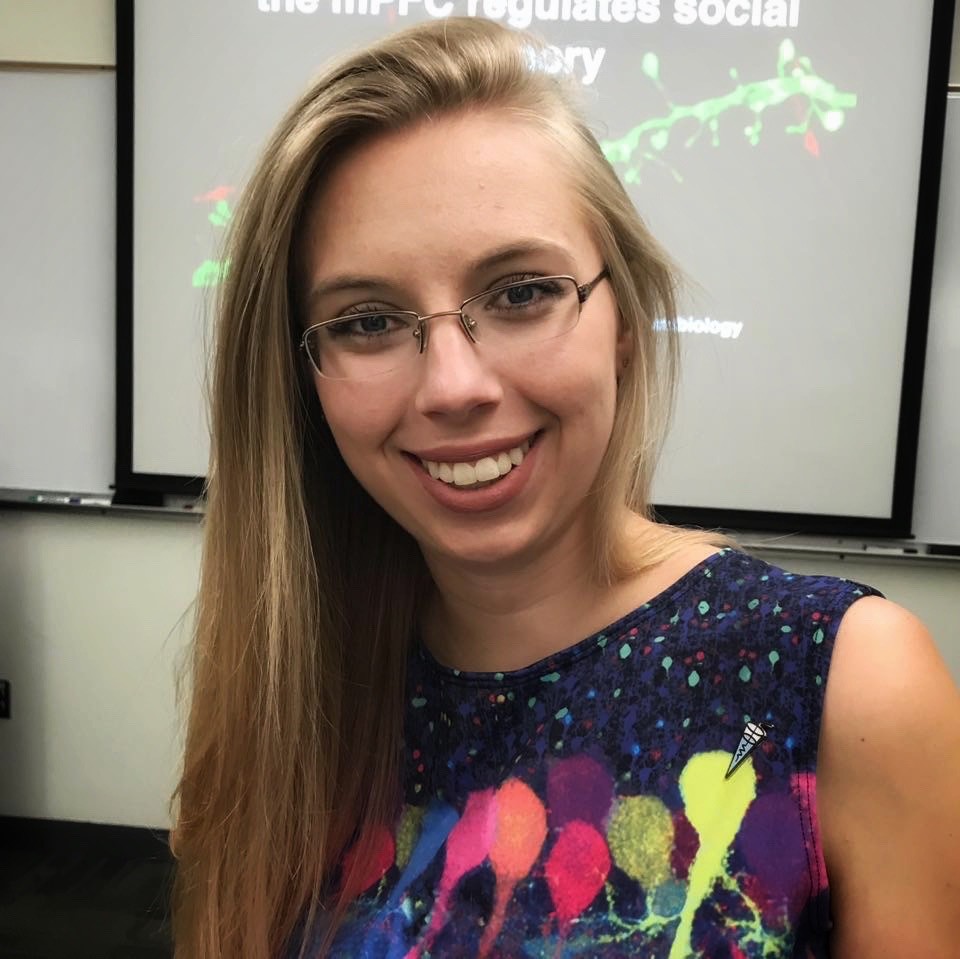
 Mary Phillips, Ph.D.
Mary Phillips, Ph.D.
Lucas Pozzo-Miller, Ph.D., professor in the Departments of Neurobiology, Neurology, Cell, Developmental and Integrative Biology (SOM), and Psychology (CAS), is the latest recipient of the School of Medicine’s Featured Discovery. This initiative celebrates important research from School of Medicine faculty members.
The study from the Pozzo-Miller lab, “Ventral hippocampal projections to the medial prefrontal cortex regulate social memory,” was recently published in eLife. Pozzo mentored Mary Phillips, Ph.D., who was a graduate student in the GBS Neuroscience theme, and Ms. Holly Robinson, who was an undergraduate in the Undergraduate Neuroscience Program, at the time of publication.
This work demonstrates that atypically heightened activity in one region of the brain, the ventral hippocampus, in a mouse model of an autism spectrum disorder affects social memory through its long-range projections to another brain region, the medial prefrontal cortex. Pozzo-Miller says the team found that “selectively reducing the activity of cortex-projecting ventral hippocampus neurons in these mice specifically improved their social memory, without affecting other social behaviors. On the other hand, selectively increasing the activity of these cortex-projecting ventral hippocampus neurons in typical mice specifically impaired their social memory, without any other effects, like interactions with novel objects or spatial memory.” The study from the Pozzo-Miller lab is impactful for future studies of the neurobiological bases of social memory.
This knowledge is important for research, preclinical knowledge, and potential future treatments for individuals with neurodevelopmental disorders. Read the publication here.
The School of Medicine communications staff sat down with Dr. Pozzo-Miller to gain insights about the research of this study, UAB, and the science community.
Q: What compelled you to pursue this research?
We had evidence that the hippocampus of a mouse model of Rett syndrome, an autism spectrum disorder, is atypically hyperactive and affects their spatial memory (a well-established function of the hippocampus). We wanted to study potential consequences beyond spatial memory, and learned that the ventral hippocampus is involved in social memory. We also learned that its projections to the medial prefrontal cortex are thought to contribute to working memory, and are altered in rodent models of schizophrenia. Preliminary results obtained by then rotation graduate student Mary Phillips were very encouraging, which led to the work she performed for her Ph.D. degree that is published in eLife.
Q: What was your most unexpected finding?
The demonstration that selectively reducing the activity of ventral hippocampus neurons projecting to the medial prefrontal cortex in Rett mice specifically rescued their social memory, without affecting other behaviors. We also discovered that ventral hippocampal neurons projecting to other regions were not involved in social memory, alluding to the specificity of this long-range circuit. These results were consistent with our conceptual model, but the selectivity and specificity of the effect was surprising to us.
Q: How do you feel your research will impact the science community?
First, these findings have an impact on the autism community, highlighting how an atypical hippocampal function can have behavioral consequences through its long-range projections. Second, the ventral hippocampal-to-prefrontal cortex projection had not previously been implicated in social behavior or autism, and these observations provide insight into the social brain.
Q: What is your research’s relevance to human disease?
Our observations underscore the critical role played by the long-range projection from the ventral hippocampus to the medial prefrontal cortex, which is also altered in rodent models of schizophrenia, strengthening its link with neurodevelopmental disorders like autism. The long-term aim of these studies is to establish the preclinical bases for future testing of novel therapeutic treatments for neurodevelopmental disorders.
Q: What made you come to UAB?
I chose UAB due to the collegiality among the faculty members in the then recently established Department of Neurobiology, in addition to the vision and team-building abilities of the department’s founding chair, Dr. Michael Friedlander. Spending two days at the first departmental retreat as part of my recruitment activities made clear the camaraderie that existed between a diverse group of faculty, post-docs, and graduate students—it was a very easy decision then.
Q: What do you find makes the science community here unique?
The collaborative nature between labs, especially through the community of graduate students in the Neuroscience theme of GBS.